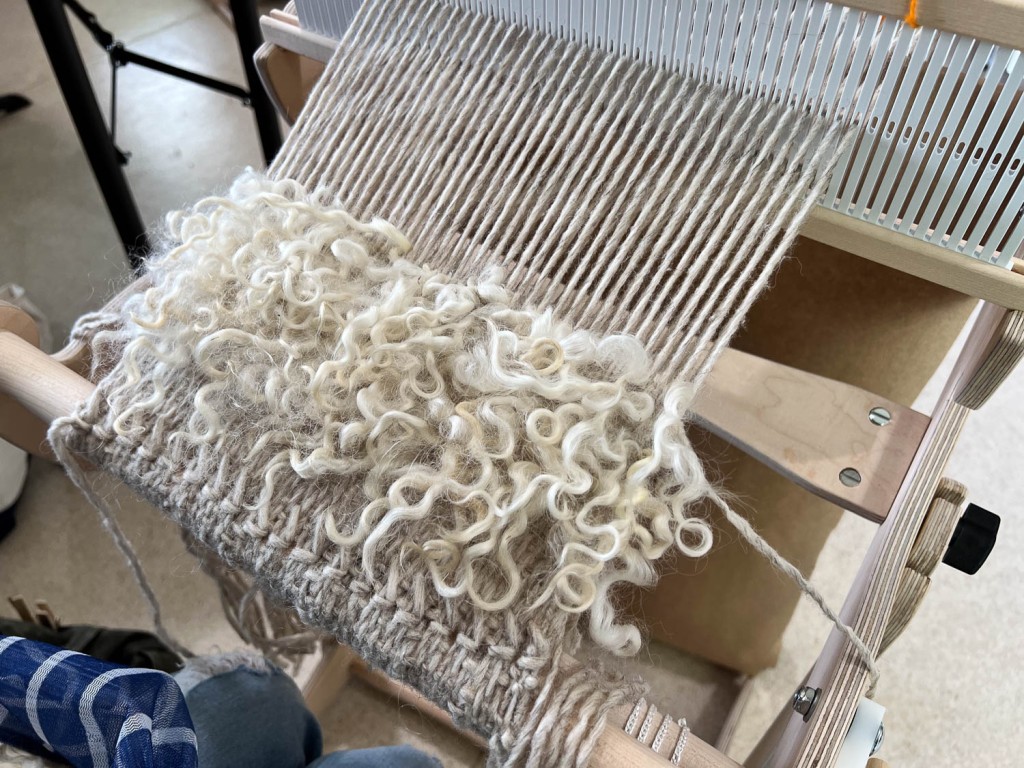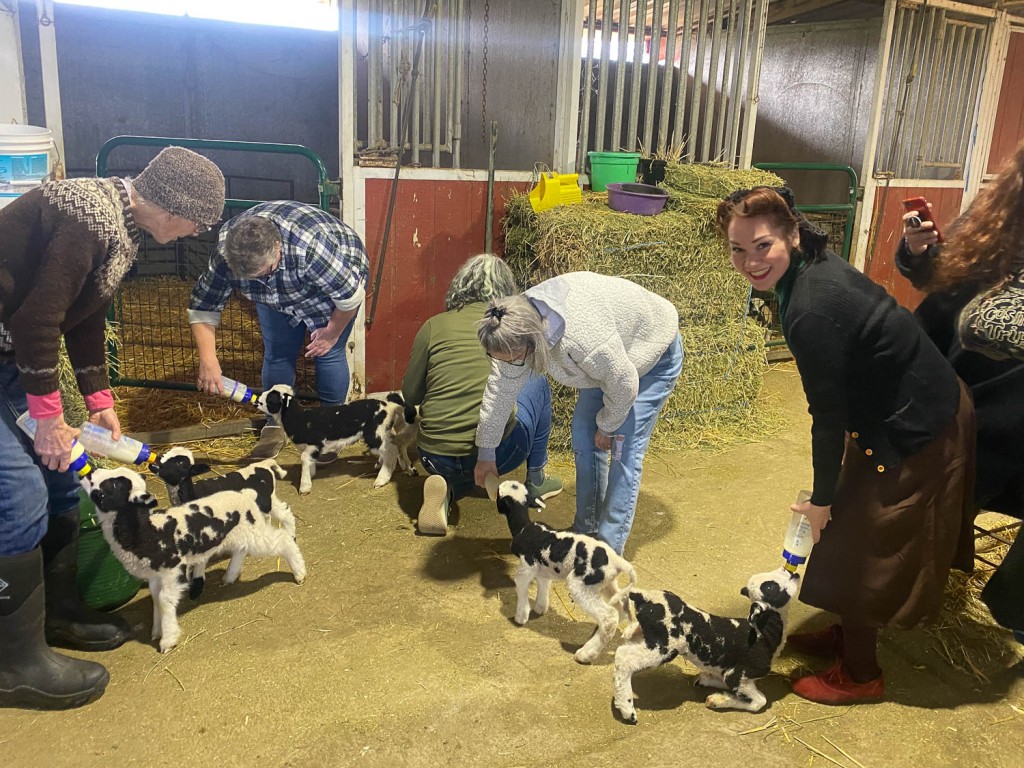I taught a 2-1/2 day workshop this weekend for CNCH (Conference of Northern California Handweavers). It went very well, mainly because the attendees were all very enthusiastic and patient. That is a lot of people to have in a hands-on workshop when learning a brand new idea. I came home inspired and I hope they did too.

Here is a view of the classroom after I unloaded my trailer. I brought 6 looms for people to use as well as all the gadgets that go with them and the yarn for the projects.
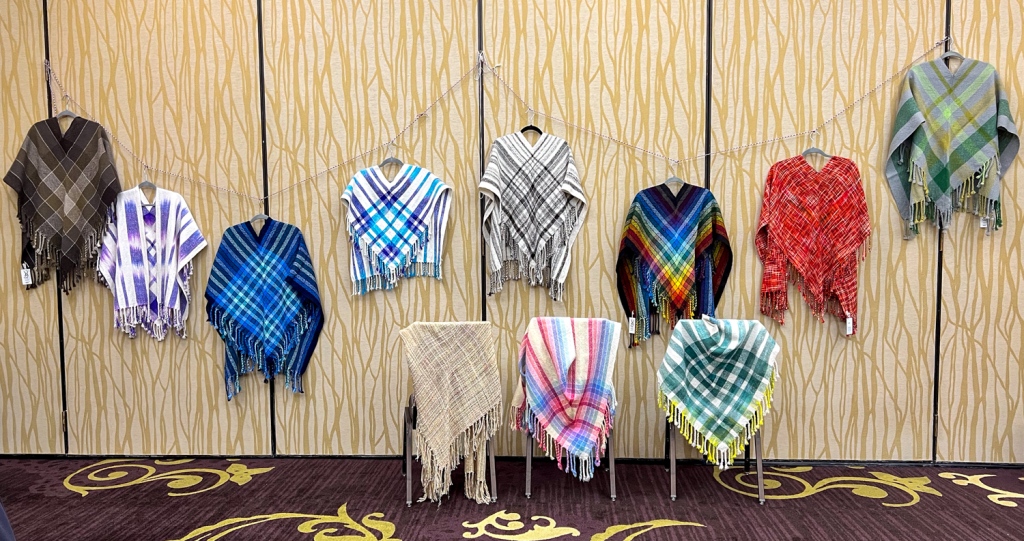
I brought several shawls to as examples and we figured out a way to hang them, clothesline style.
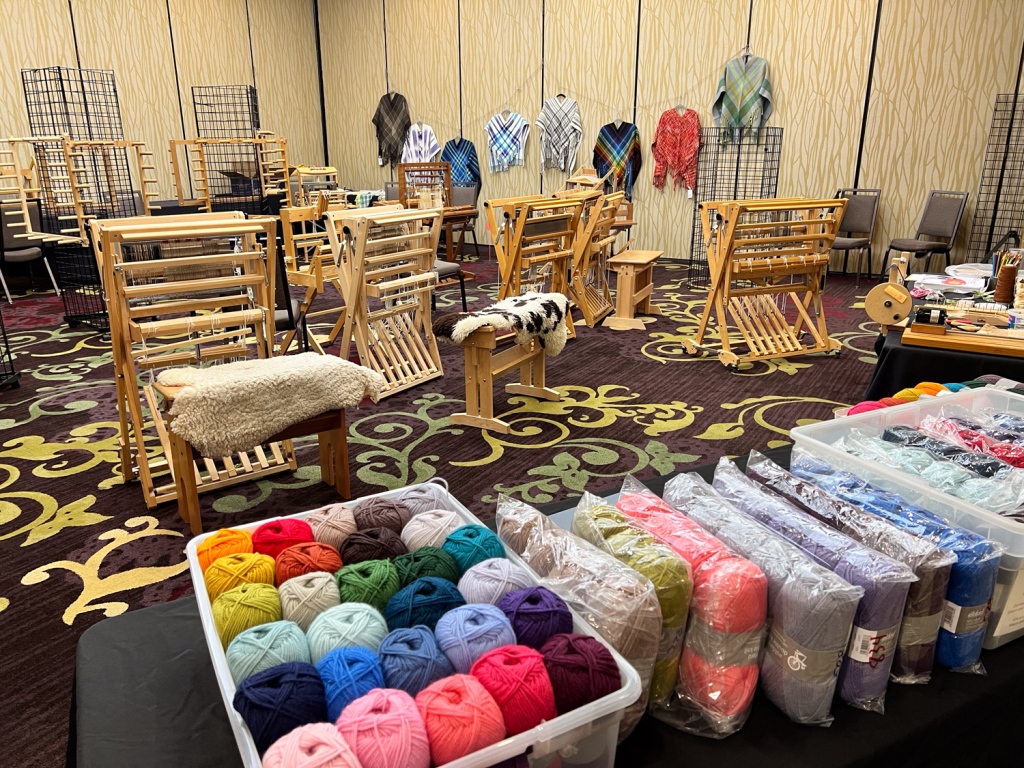
This is how the classroom looked after I had all my things arranged. This was before 7 more looms showed up and we had to find room for warping boards.

I knew that we wouldn’t be able to hang warping frames on the walls and I suggested using metal grid wall to provide “walls”. The room got more and more cluttered looking as we set up work stations around warping boards and looms. It was already cluttered looking because of the dramatic design of the carpet and the stripy walls.

This is the classroom next door. There is still a distracting rug, but overall the classroom looked much more organized with the looms all arranged in rows like a desks in a classroom. These looms were brought to the show already warped, so they didn’t need to start with warping stations like we did.
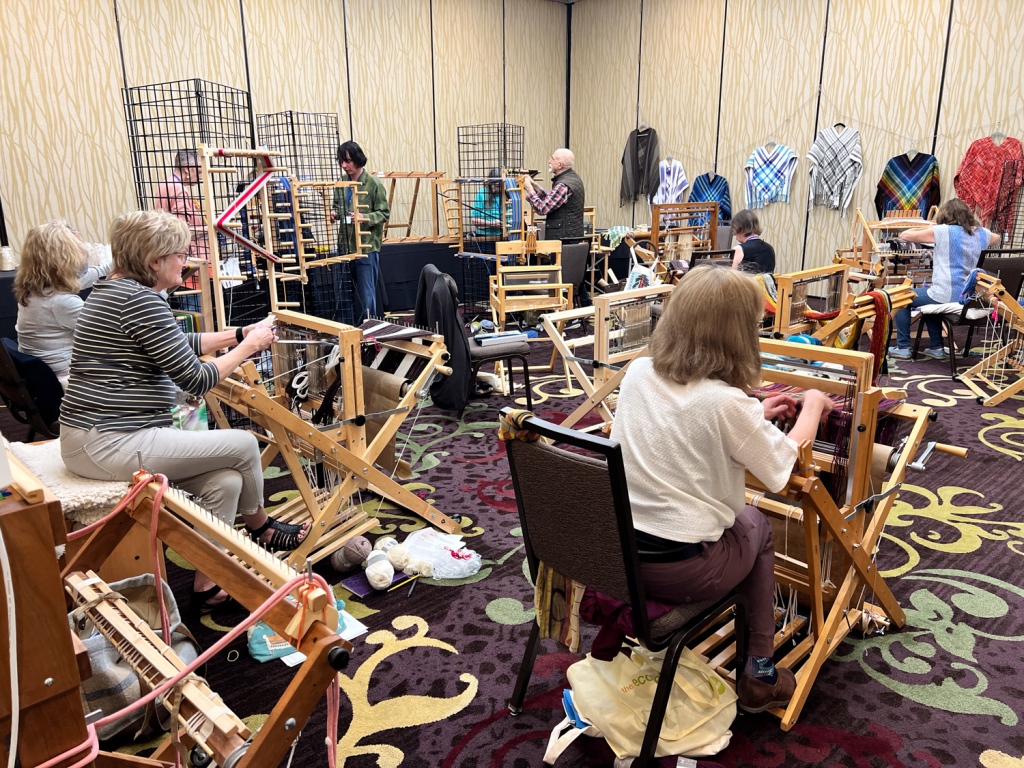
Our classroom looked a little more chaotic, but there was a lot of work going on here. In this photo some people are still warping and others are threading their looms.

At this point everyone was weaving. It is hard to tell that there were 13 weavers in this room (some just out of the photo).
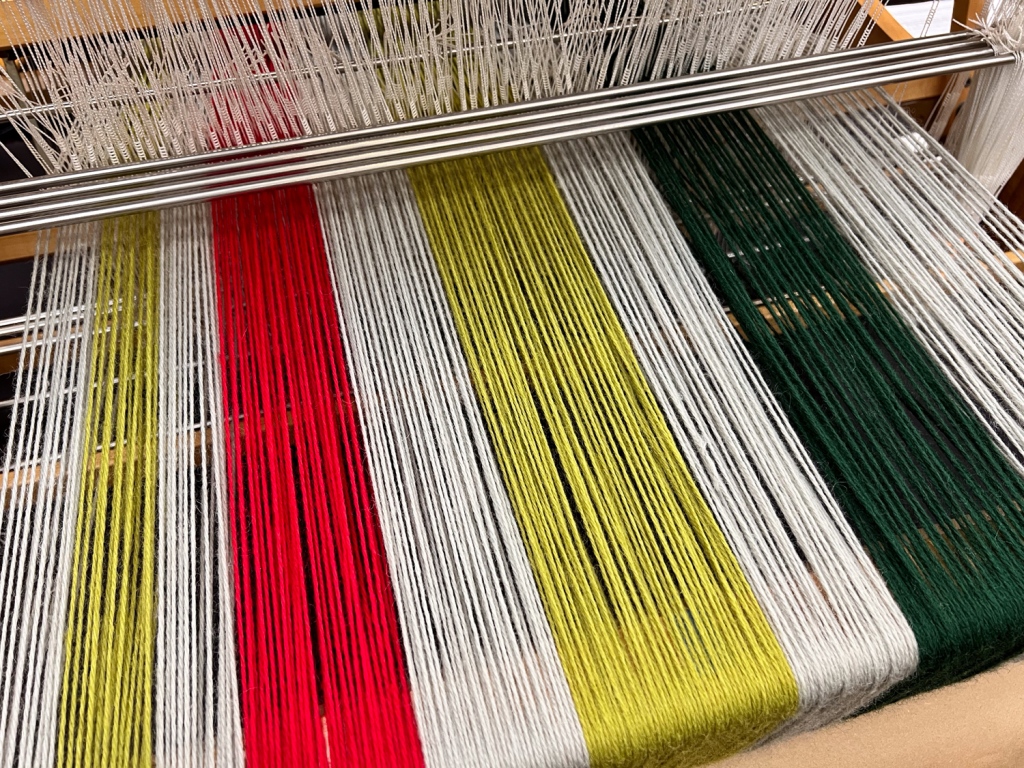
It was fun to see the variety of warp designs.
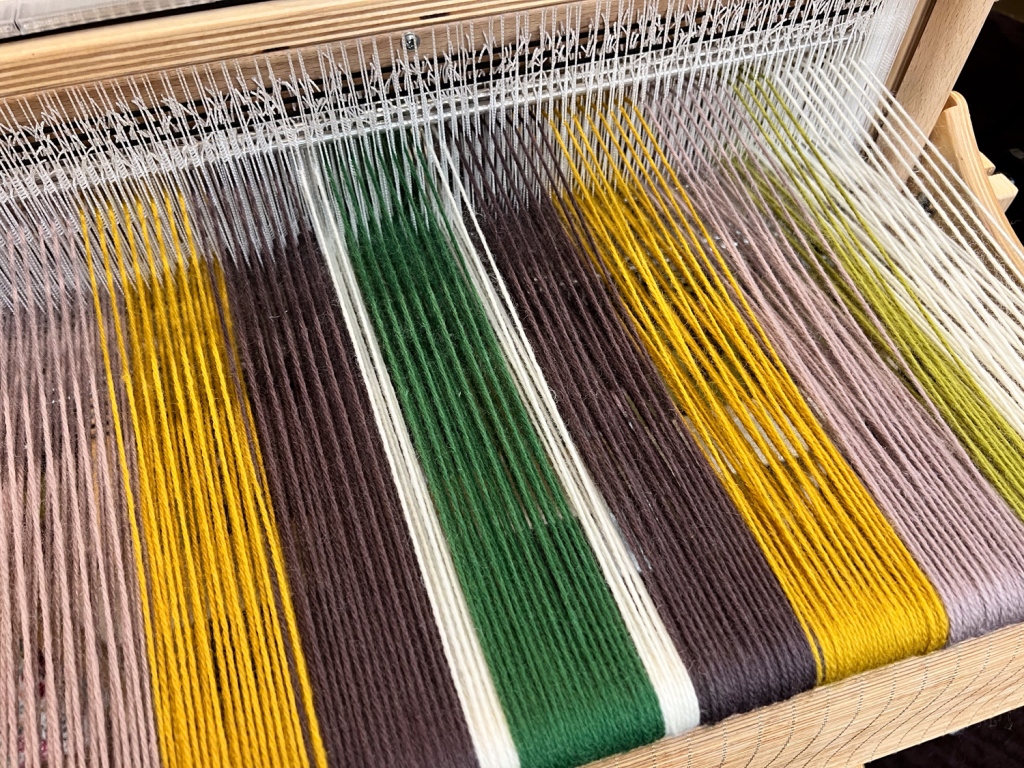

This photo shows one of the shawls partially through the Weave a V part. Warp threads are cut in pairs at the back of the loom and then those warp threads become weft, creating a plaid design.
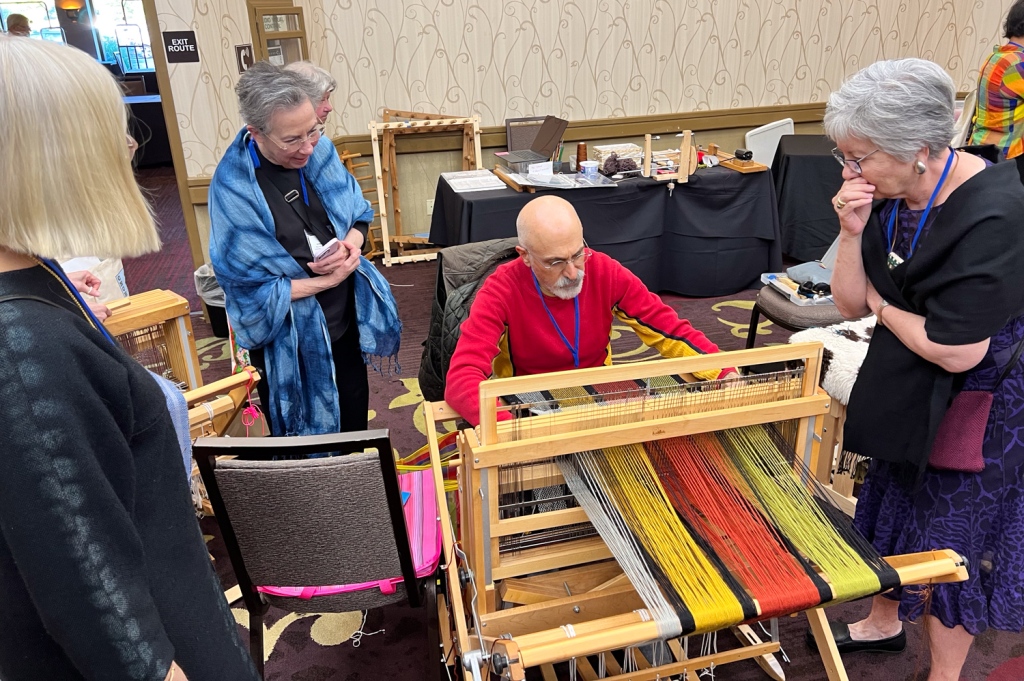
On Saturday night teachers were asked to stay in their classrooms so that other attendees could wander through and see what was going on in each class. Some of the students stayed as well and were glad to demonstrate the technique (while making progress on their projects).

This seems to be a random photo. I left the hotel early on Saturday and Sunday mornings to take a brisk walk around the golf coarse.

Sunday noon. Some of the students didn’t finish the shawls in class and will finish at home, but some did finish in time to open up the shawls and take photos. These shawls all need finishing touches–tie or twist fringe and wet finish. Then they will have an ore finished look. It is fun to see so many color ideas!

The unique design of the V-Shawl is evident when you see the backs!
Thanks to all these students for making this a great weekend!






